An interference is observed due to two coherent sources S1 placed at origin and S2 placed at (0,3λ,0). Here, lambda is the wavelength of the sources. A detector D is moved along the positive x-axis. Find x-coordinates on the x-axis (excluding x=0andx=∞) where maximum intensity is observed.
At x = 0, path differenceis 3λ . Hence , third order maxima will be obtained. At x=∞ , path difference is zero. Hence, zero order maxima is obtained . In between first and second order maxima
will be obtained.
x=1.25λandx=4λ

Topper's Solved these Questions
- BOOK - NARAYNACHAPTER - WAVE OPTICSEXERCISE - Evaluate yourself - 112videos
WAVE OPTICS
- BOOK - NARAYNACHAPTER - WAVE OPTICSEXERCISE - Evaluate yourself - 23videos
WAVE OPTICS
- BOOK - NARAYNACHAPTER - WAVE OPTICSEXERCISE - LEVEL - II(H.W)19videos
WAVE OPTICS
- BOOK - NARAYNACHAPTER - SEMICONDUCTOR ELECTRONICSEXERCISE - ADDITIONAL EXERCISE (ASSERTION AND REASON TYPE QUESTIONS :)19videos
SEMICONDUCTOR ELECTRONICS
Similar Questions
An inteference is observed due to two coherent sources A and B separated by a distance 4λ along Y-axis, where λ is the wavelength of light. A detector 'D' is moved alog the positive X-axis. Find the totla number of maxima observe on the X-axis excluding the points x=0 and x=∞ ?
 View Solution
View SolutionAn inteference is observed due to two coherent sources A and B separated by a distance 4λ along Y-axis, where λ is the wavelength of light. A detector 'D' is moved alog the positive X-axis. Find the total number of maxima observe on the X-axis excluding the points x=0 and x=∞ ?
 View Solution
View Solution
Knowledge Check
- Question 1 - Select One
An interference is observed due to two coherent sources S1 placed at origin and S2 placed at (0, 3l, 0). Here, λ is the wavelength of the sources. Both sources are having equal intensity I0. A detector D is moved along the positive x-axix.
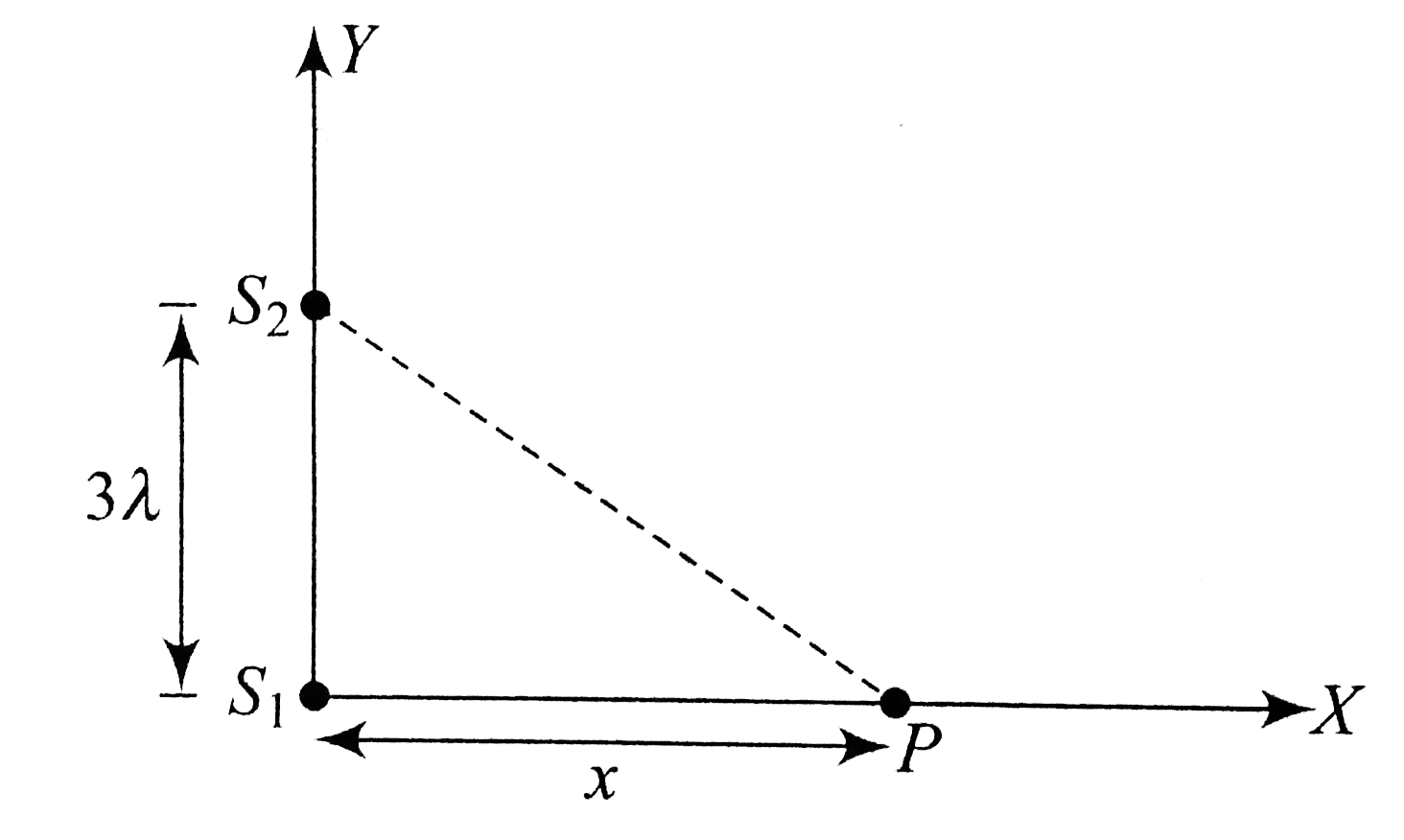
Find x-coordinates on the x-axis (exchange x=0 and x=OO).Ax=4λBx=7λ/4Cx=5λ/4Dx=3λ - Question 2 - Select One
An interference is observed due to two coherent sources S1 placed at origin and S2 placed at (0, 3l, 0). Here, λ is the wavelength of the sources. Both sources are having equal intensity I0. A detector D is moved along the positive x-axix.
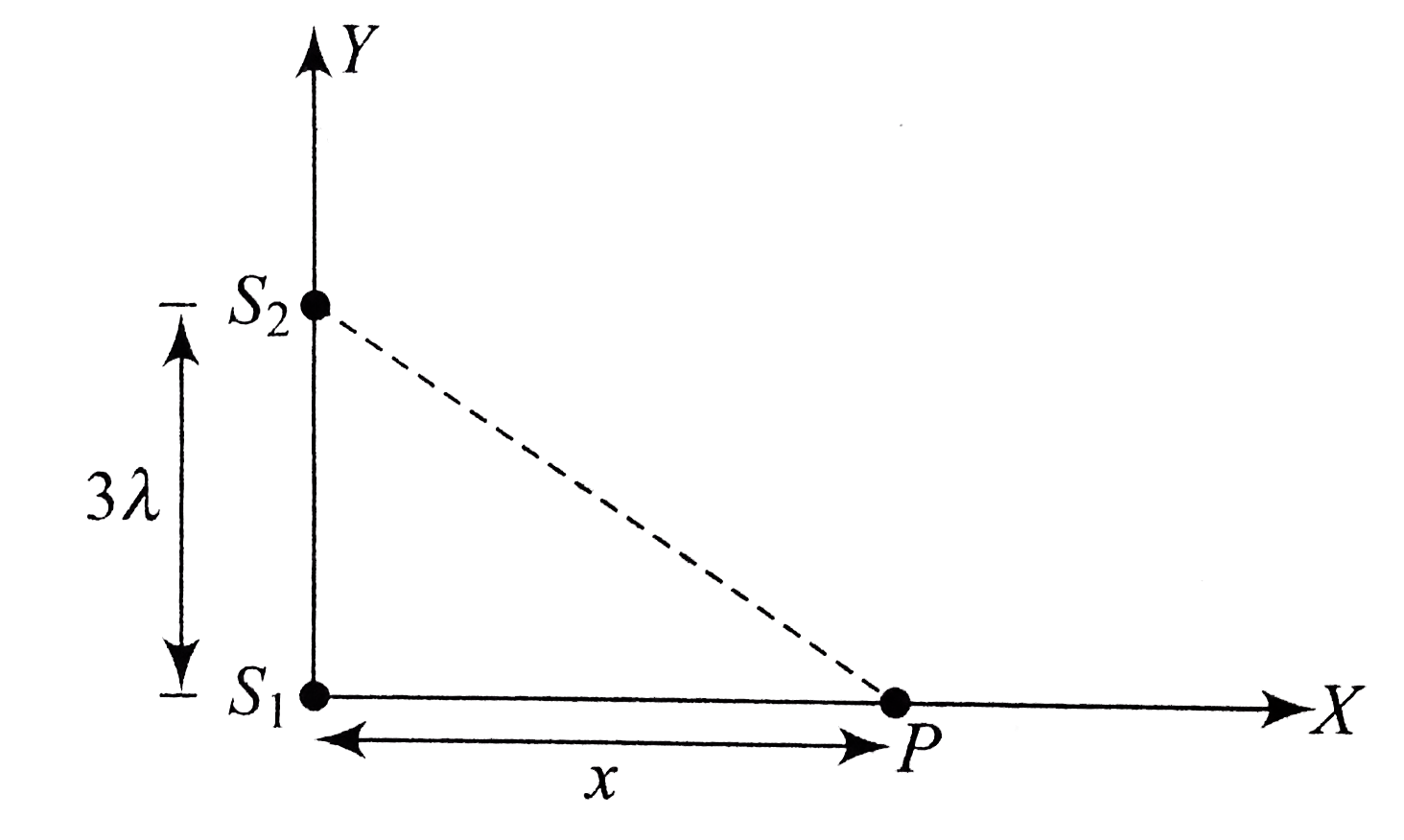
Total number of black points observed by the observer on positive x-axis isAtwoBfourCthreeDfive - Question 3 - Select One
An interference is observed due to two coherent sources separated by a distance 5λ along Y-axis, where λ is the wavelength of light A detector D is moved along the positive X -axis The number of point on the X-axis excluding the points x=0 and x=∞ at which resultant intensity will be maximum are
A4B5C∞Dzero
Two coherent sources Sf and S2 (in phase with ech other) are placed at a distance of 2λ as shown where λ is wavelength of sound. A detector moves on line AB parrallel to S1S2. If detector detects maximum intensity at finite distance from O at θ=±(πn). Find n
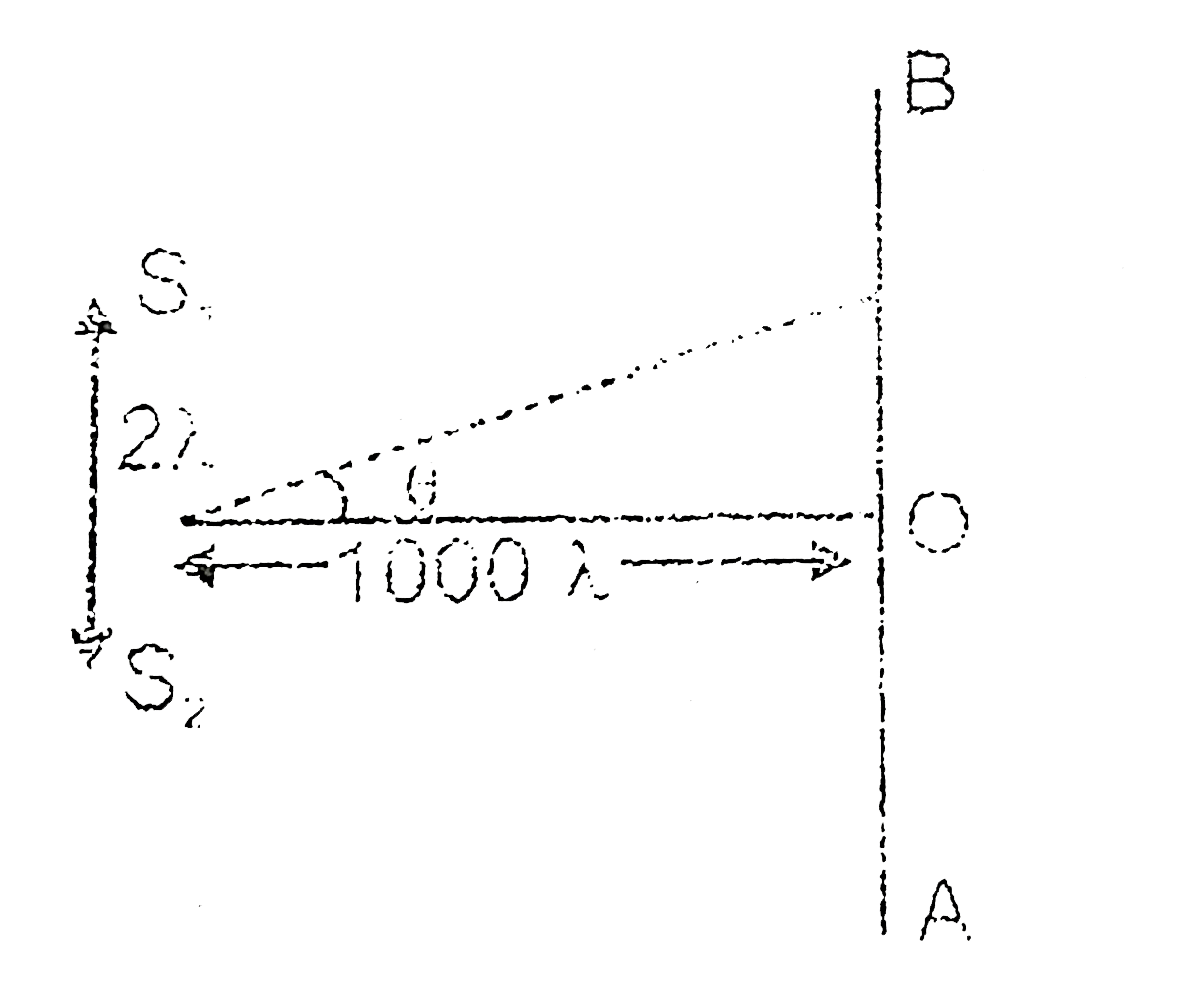 View Solution
View SolutionThere are two coherent sources S1 and S2 which produce waves in same phase placed on Y axis at points (0, 2d) and (0, d) as shown in figure-6.23. A detector D is placed at origin which moves along X direction, find the number of maxima recorded by detector excluding points x = 0 and x=∞. Given that wavelength of light produced is 6200Å and separation between sources is 0.34 mm.
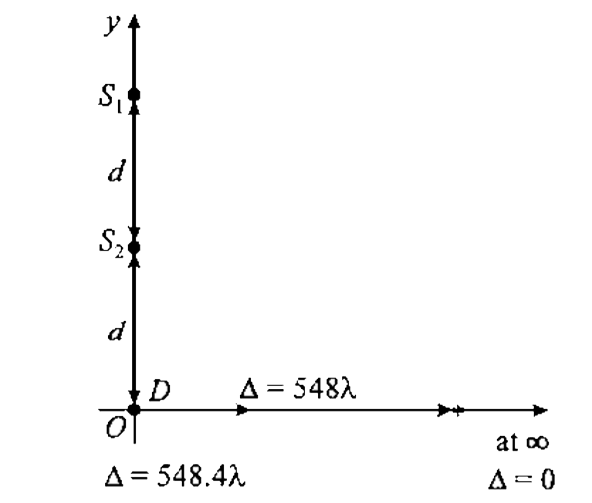 View Solution
View SolutionTwo coherent sources S1 and S2 area separated by a distance four times the wavelength λ of the source. The sources lie along y axis whereas a detector moves along +x axis. Leaving the origin and far off points the number of points where maxima are observed is
View SolutionTwo coherent light sources A and B are at a distance 3λ from each other (λ=wavelength)The distances from A on the X-axis at which the interference is constructive are
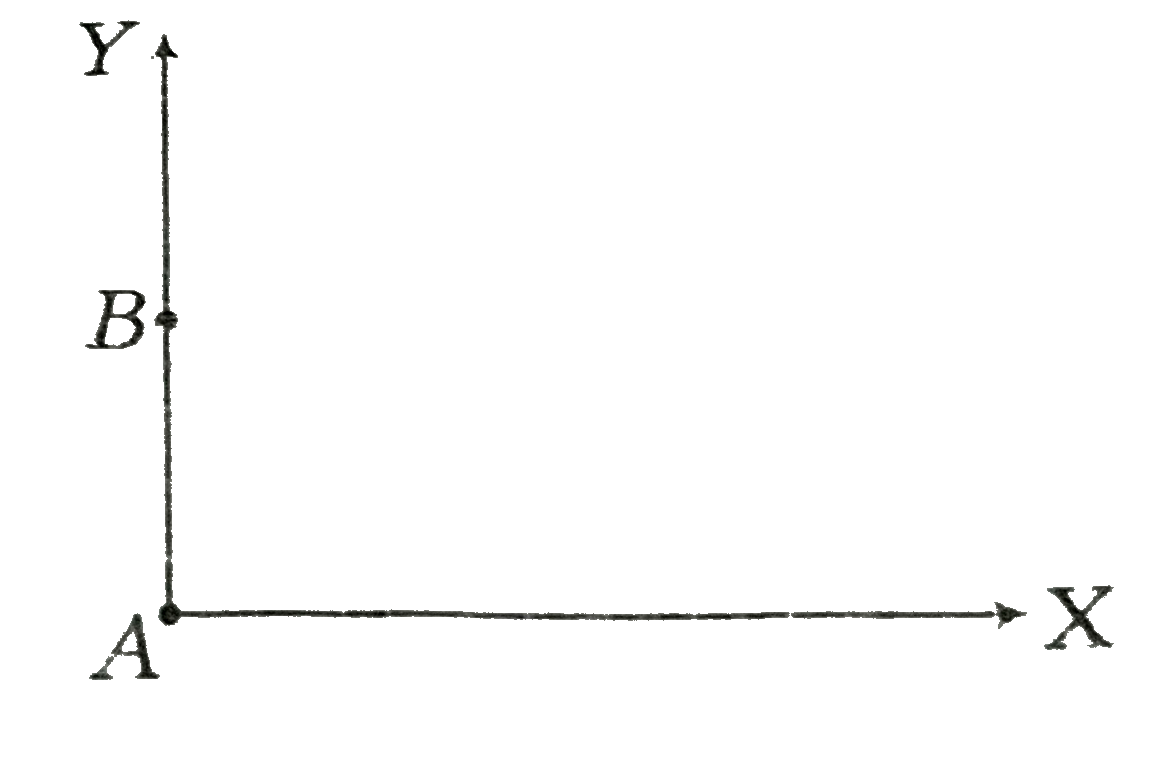 View Solution
View SolutionTwo coherent sources emit light of wavelength λ. Separation between them, d=4λ.
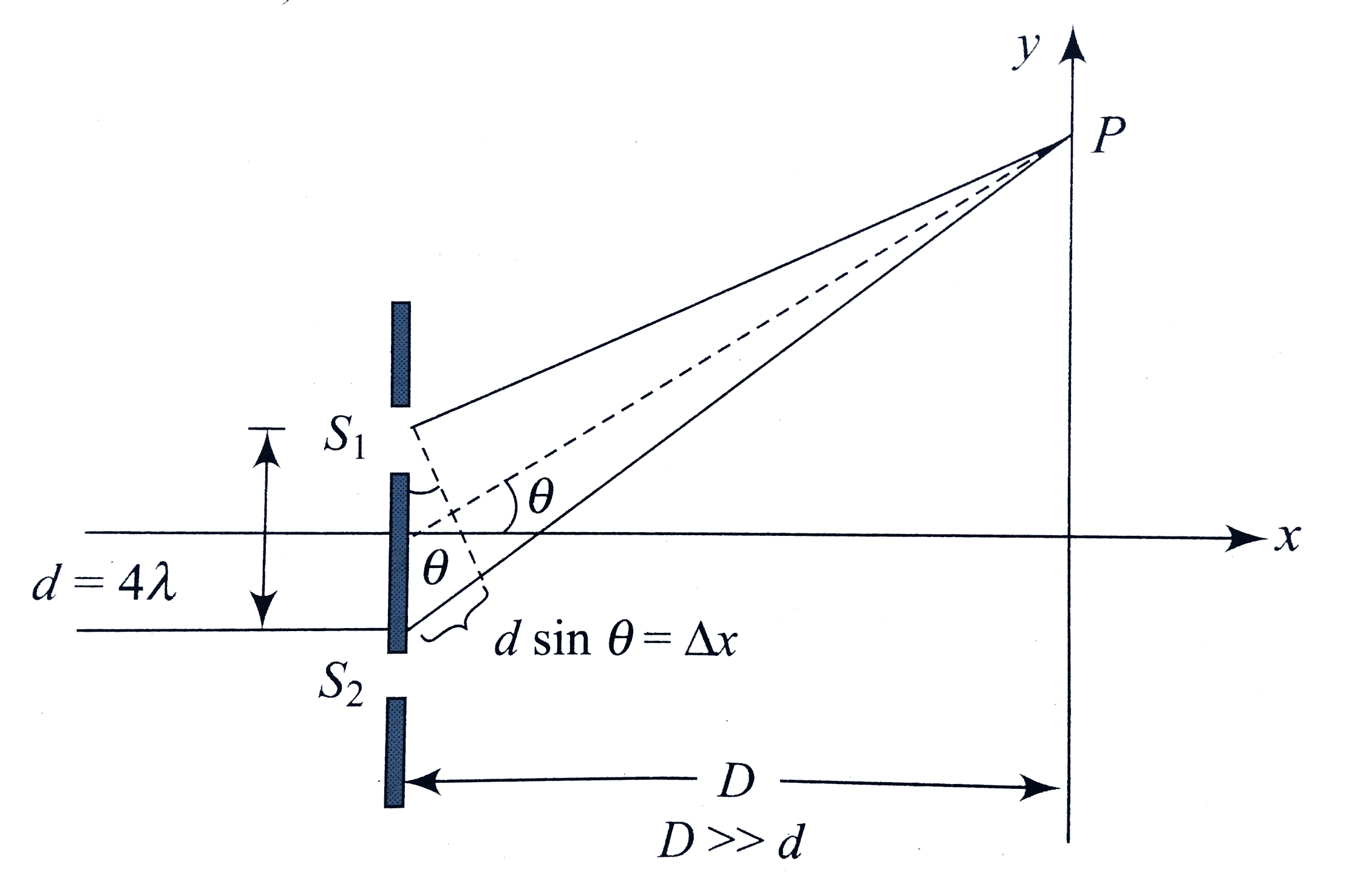
If a detector moves along the y-axis, what is the maximum number of minima observed?
If the detector moves along 'x-axis beginning from S2, the maximum number of minima observed isView Solution

